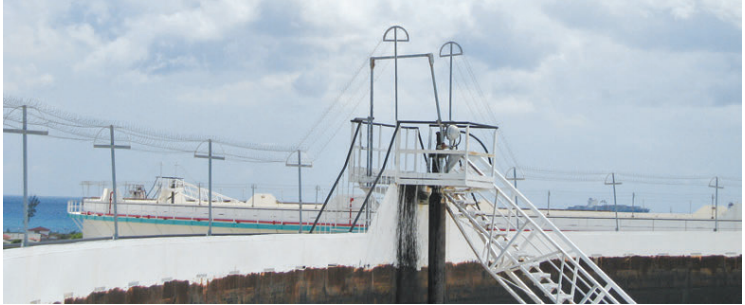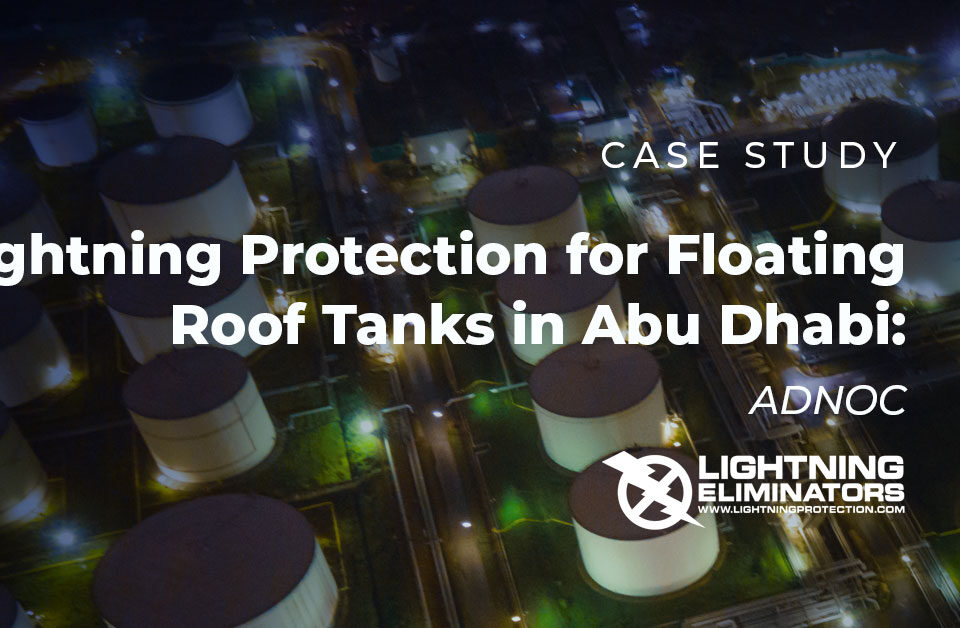- We Prevent Lightning Related Problems.

ADNOC’s Takreer Takes Low-Impedance Path to Complete Tank Safety
May 30, 2013
Lightning Protection is Mission Critical to Operations and Sustainability
June 13, 2013Protecting Your Assets from Lightning Strikes with Lightning Protection Products

By: Lightning Diva@Large
Lightning Protection Products
Often times companies and safety managers do not consider the magnitude and damage that lightning strikes can have on their assets. Lightning strikes are a primary cause of fires for petroleum storage tanks used in the energy, chemical and utilities industries, for example, and the damage from those strikes is often significant. Some strikes result in tens of millions of dollars worth of damage, not to mention days or weeks of downtime. In this article, Joe Lanzoni, who has been with LEC for over 20 years, discusses his experiences working in the lightning protection industry.
Lightning Protection Products
Featured on Powerin’ the Patch Lightning Protection Products
May 2013 Issue
Protecting your floating tank storage facilities before it’s too late may come as an afterthought, but for Joe Lanzoni, vice-president of operations with the Colorado-based Lightning Eliminators & Consultants (LEC) Inc., that should be at the front of people’s minds.
“I’ve been here over 20 years and it seems to me that most of our business is what I call post-catastrophic, so a typical customer has had an event,” he said.
“An event can range from anything from a fire at an industrial facility to a homeowner losing a television set. A really bad situation would be lightning igniting a petroleum storage tank.”
LEC was established in 1971 in California, but moved to Colorado in the ‘80s. While it currently has some sales in Ontario, the company is looking to expand into the Western Canada market.
Unlike other conventional lightning protection companies, where lightning rods are installed on the tank, or a cable or conductor is suspended over the tank between two poles, LEC uses a system to ward off lightning.
“Neither of those techniques are effective at preventing the effects that cause the ignition of vapours,” Lanzoni said. “We have a lightning protection system called the Dissipation Array System (DAS), (which) is a lightning-strike avoidance system. The way that works is it dissipates the charge that accumulates on the structure prior to the collection of a strike.”
Lanzoni explained conventional techniques are made to collect lightning strikes and bring energy to the ground, whereas the LEC system wards off the strike. He added the conventional method isn’t necessarily a good measure, as it still grounds the charge in the vicinity of the tank.
Lanzoni said LEC always encourages people to take a preventative approach towards lightning strikes and related consequences.
He said the cost to protect a tank is a small fraction of the value of the tank’s contents and of damages a fire could cause.
“These tanks, once they ignite, they’re extremely difficult to extinguish and they cause lots of smoke, lots of fire, it threatens the entire community and so forth,” he said, adding sometimes towns downwind of such fi res have to be evacuated.
“In the Midwest a couple of years ago, there were some really big tank fires where lightning ignited and the one I’m thinking of was where lightning ignited a huge tank containing refined, unleaded gasoline.”
Prices for DAS systems range from a few thousand dollars to protect a small tank to upwards of $20,000 for a huge tank. These are one-time costs, as the materials are considered durable, outdoor equipment.
There is a full range of services offered by LEC. Lanzoni said the company has the capabilities to design and engineer the lightning protection products & system, manufacture and also install it.
“We can provide and any part of that,” he said. “We typically design and build and sometimes we’ll install it and sometimes the customer will install it.”
The systems also won’t affect the operation of the tank, as they are passive and not energized or plugged in.
“When we design a system, we’ll design it and we’ll send the drawings to the customer for approval to make sure we’ve co-ordinated any allowances to not interfere,” he said
For more information on LEC or any of its services, visit www.lightningprotection.com.


